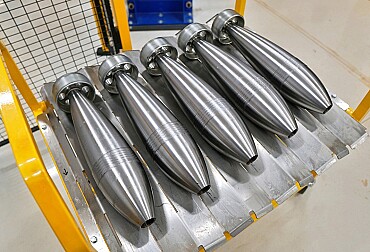The Achilles heel of the Baltic: The strategic importance of the Suwalki Corridor
The Suwalki Corridor, a short stretch of land between Poland and Lithuania, has gained strategic importance since the onset of the conflict in Ukraine. This narrow strip, approximately 62 kilometers long and named after the Polish city of Suwalki, is a critical point of interest for NATO and the Baltic states. The potential Russian occupation of this territory poses a significant security threat to the region.

Strategically located, the Suwalki Corridor lies between two NATO member states, Lithuania and Poland, and is flanked by Russian-aligned territories: the Kaliningrad Oblast and Belarus. The corridor separates Belarus, heavily influenced by Russia, from the crucial Kaliningrad region. This border became strategically significant after Poland joined NATO in 1999, followed by Lithuania five years later.
In an interview with American journalist Tucker Carlson in early February 2024, President Vladimir Putin stated that the Russian military had no plans to invade Poland or the Baltic states, dismissing the fears of these countries as unnecessary alarmism. However, according to Army Technology, the Baltic NATO states, especially Lithuania, have legitimate concerns. The corridor's geopolitical significance makes it a potential target for Russian intervention, as controlling it would connect Belarus directly with Kaliningrad, effectively cutting off the Baltic states from the rest of NATO. This would leave the only possible NATO support route to Lithuania, Latvia, and Estonia through the Baltic Sea, contingent on overcoming Kaliningrad's robust air defenses.
In recent months, the Suwalki Corridor has been the site of extensive NATO exercises, including Steadfast Defender 2024, the largest European exercise since the Ukraine conflict began. Conducted from January to May 2024, the exercise involved over 90,000 troops from 32 NATO member countries, showcasing a wide array of military equipment including F-35 and F-15 aircraft, 50 ships, and over 1,100 combat vehicles. This demonstration aimed to reassure NATO's readiness to defend its territory against any aggression.
Security experts warn that if Russia were to advance its military ambitions into Europe, heavy fighting would likely ensue over the Suwalki Corridor from the outset. The region's terrain, characterized by forests, fields, and small villages, coupled with limited logistical infrastructure—only two roads and one railway—adds to the strategic complexity. In response to these threats, NATO has deployed approximately 1,000 troops to each of the three Baltic states, conducting exercises near the Suwalki Corridor.
Kaliningrad itself presents a significant threat to the Baltic states. Since its annexation in 1945, Russia has fortified this region with substantial military assets. According to Christina Chatzitheodorou's February 2022 report on the Polish-Lithuanian border's security risks, Kaliningrad hosts around 1,100 main battle tanks, 1,300 armored vehicles, and 35 modernized Su-27 fighters.
In August 2022, Russia further escalated the situation by stationing MiG-31 aircraft armed with hypersonic Kinzhal missiles in Kaliningrad. These missiles, due to their speed and ballistic flight characteristics, are challenging to detect and intercept, posing a severe threat. However, the recent accession of Sweden and Finland to NATO has somewhat countered this threat, encircling Kaliningrad with NATO member states.
The Baltic states are also concerned about Belarus. They believe that Belarus has received numerous nuclear warheads from Russia over the past two years, since the Ukraine conflict began. Satellite images from September 2023 of the Bretsky base in Belarus showed military exercises aimed at preparing for combat in radioactive environments. Additionally, Russian troops have been training Belarusian soldiers near the Polish border, prompting Poland to close some border crossings.
Russia's stance towards the Baltic states, particularly given the higher proportion of Russian-speaking populations, suggests that it seeks some degree of control over these territories. This concern mirrors the situations seen in Crimea and the Donetsk region of Ukraine. Aware of this threat, the Baltic states have significantly increased their military spending and preparedness since Russia's annexation of Crimea in 2014. Each country now spends more than the NATO-mandated 2% of GDP on defense, with Lithuania reintroducing compulsory military service ten years ago. In January 2024, Estonia, Lithuania, and Latvia signed a memorandum to build a defensive line along their eastern borders, involving around 600 bunkers integrated into the landscape.
In conclusion, the Suwalki Corridor's strategic importance cannot be overstated. It is a critical point of vulnerability for NATO in the Baltic region, and its defense is paramount to ensuring the security and integrity of the alliance's eastern flank. The ongoing military preparations and strategic investments by NATO and the Baltic states underscore the corridor's significance and the potential threats posed by Russian ambitions in the region.








